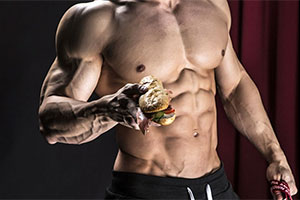As I had my usual cup of tea this morning, I found myself staring at my teaspoon of sugar.
It dawned on me that this little spoon held almost the exact same amount of sugar that was floating around in my blood at that exact moment.
(The average human being has about 5 liters of blood, and since fasting blood sugar is around 80-100 mg/dl, this adds up to around 5 grams of sugar – roughly the amount of sugar in one teaspoon.)
It is amazing how well our bodies can regulate our blood sugar levels. Even after a meal our blood sugar only raises to about 7 grams – roughly a teaspoon and a half.
We know that it is our liver that is primarily responsible for the regulation of our blood sugar. When we eat a large amount of sugar, our liver signals for an increased secretion of insulin which clears sugar out of our blood to be used as a fuel, or to be stored as glycogen (the bodies storage form of sugar) or fat. When we don’t eat any sugar, our liver releases sugar from the 100-120 grams (roughly 20 teaspoons) it keeps in storage as a ‘reserve’ as glycogen.
It is this process that keeps our blood sugar tightly regulated between a teaspoon to a teaspoon and a half.
However, this is about as far as I get in my physiology textbooks before I get confused. You see, the textbooks state that its this balance between storage and release of glucose that keeps our blood sugar in check.
I question this idea of ‘balance’.
Since most of us are sedentary for most of the day, and the current trend is to eat constantly (small meals every 2-3 hours), I think it’s safe to say that our glycogen reserves are at “Full” almost all day. So if our glycogen levels are full, and the total amount of sugar in our blood ranges from a teaspoon to a teaspoon and a half…what happens to all the sugar we eat when we have something like a dinner roll?
A dinner roll has about 5 teaspoons (25 grams) of sugar in it. This is the five times the amount of sugar in your blood, and almost 1/4 of the sugar being stored in your liver when your reserves are at full!
Since our blood is regulated to stay withing a small range of a teaspoon to a teaspoon and a half of sugar, and we are assuming our muscles and liver glycogen levels are full because we’ve been sitting at a desk all day, where does this sugar go?
Well a small amount can be used as fuel, and the rest…well it has to go somewhere, so it must be stored as fat.
This doesn’t seem like ‘balance’ to me. It seems like a constant state of elevated insulin and storage of fat.
Now, the discrepancy between what the textbooks say and what actually happens is mostly a result of the fact that we typically eat every couple of hours, and with the exception of an hour or two of exercise every day or two, we are very sedentary.
Now, 4-7 hours after eating (Depending on the size of the meal) is when our blood sugar starts to fall and the glycogen in our livers starts to be released, thus lowering the glycogen ‘fuel tank’ in our liver.
So after 8 hours on an empty stomach if we were to eat a dinner roll, the sugars from the roll would go into re-filing our glycogen tanks in our liver first, then the rest would be used as energy or be stored as fat for use later when we are between meals.
But since we continually eat and snack every 2-3 hours the only time our body has to lower its glycogen levels and maybe burn off a little bit of fat is when we sleep. But, since we only sleep 6-8 hours in any given night, even this ‘time off’ from absorbing and storing sugar as glycogen and fat may be very limited.
This means that this current trend of eating several small meals throughout the day may actually be counterproductive to fat loss, depending on how small these meals really are and how much sugar they contain.
The bottom line is, if you are going to eat continuous small meals throughout the day, make sure they are sensible portions sizes (and by sensibleI mean small), they contain meats, fruits and vegetables, and as little starches as possible (including whole grains).
BP








